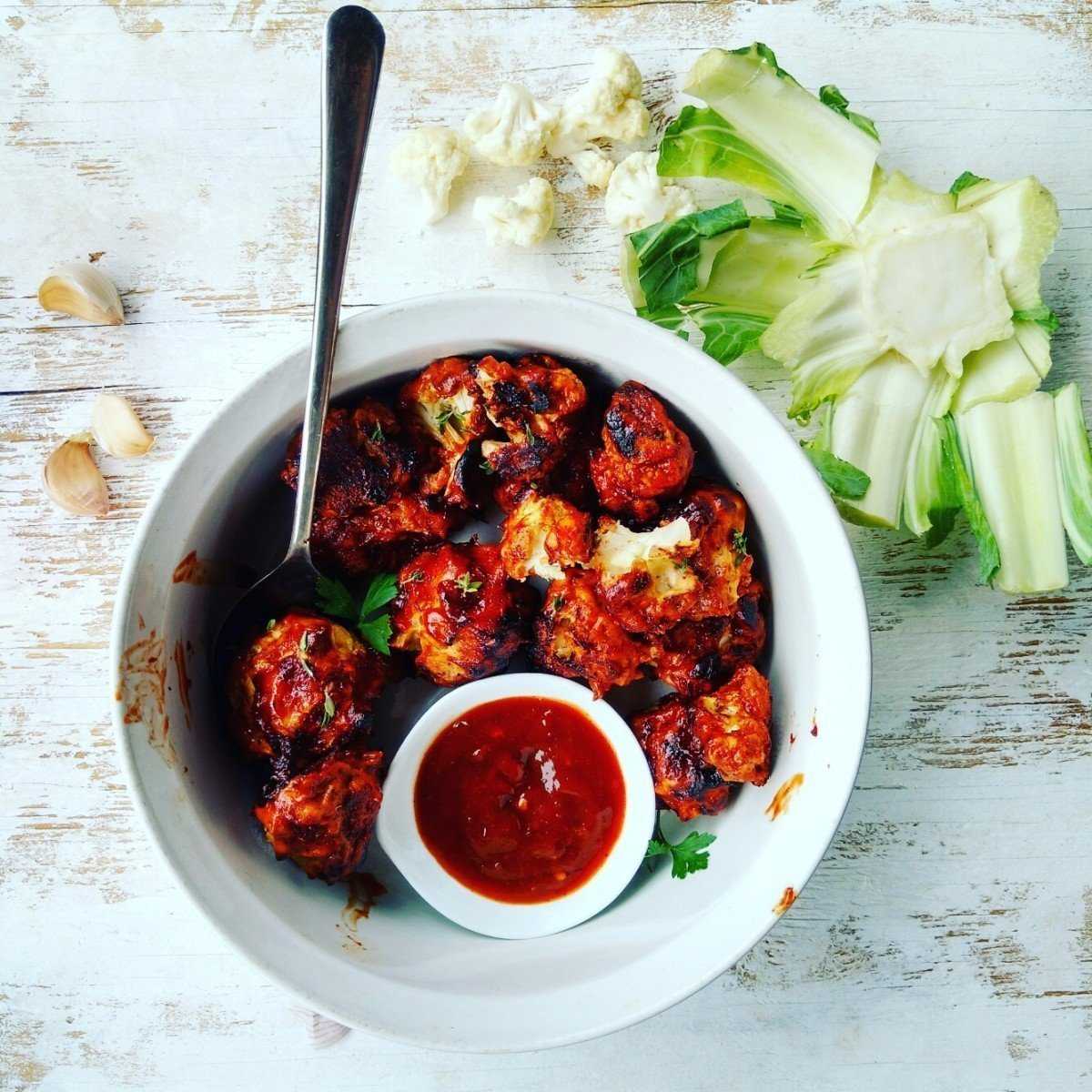BY: EARTHA LOWE
Vegetarian food is rich in variety. Upon reading the Vegetarian Society’s guide to “Going Veggie: What to Eat,” I’m reminded that an enjoyable part of making the transition to a vegetarian diet – or mostly vegetarian diet – is learning how to make simple switches to my favorite dishes to make them veggie friendly, without giving up the flavor. But before we get to talking about how to make some of these simple switches like infusing the great taste of wings in a cauliflower, let’s first answer this question: what do vegetarians eat?
A vegetarian is someone who lives on a diet consisting of fruits and vegetables, grains, pulses, nuts, seeds, mushrooms and yeast with, or without dairy products, honey or eggs. While it’s important to note that not all vegetarians are the same, a vegetarian lifestyle, however, does introduce you to a wide range of foods that are healthy, nutrient-rich, sustainable and cruelty-free. Vegetarians fall into several categories depending on what they choose to eat:
- Lacto-ovo-vegetarians eat both dairy products and eggs.
- Lacto-vegetarians eat dairy products but avoid eggs.
- Vegans do not eat dairy products, eggs or any products which are derived from animals.
If you are under the impression that vegetarians eat fish, this is not the case. A ‘pescatarian’ is someone who follows a mainly vegetarian diet but chooses to eat fish. A pescatarian diet does not include meat or poultry.
The Protein Switch
Cooking with pulses or “legumes, “are a satisfying way to add protein to any recipe. These tiny nutritious powerhouses include crops like chickpeas, lentils, dry peas (split green, split yellow, whole green, whole yellow) and beans (black, blackeye peas, kidney, great northern, navy, pinto, fava, small red, mung, lima, cranberry, pink). Nuts, tofu or meat substitutes like soya mince, also make a great addition to a wide range of dishes.
Crunchy Barbecue Cauliflower Wings
Learn how to cook these tasty little bites made with crunchy pecans in a seasoned batter.
You’ll Need:
- Non-stick cooking spray, for spraying the baking sheet
- 1 cup whole-wheat flour
- 1 tablespoon pecans, finely chopped
- ½ teaspoon coconut oil or extra virgin olive oil
- 1 teaspoon garlic powder
- 1 teaspoon fresh thyme leaves (optional)
- ½ teaspoon paprika
- ½ teaspoon sea salt (or to taste)
- 1 teaspoon freshly ground black pepper
- 1 medium head cauliflower, cut into 2- to 3-inch florets (reserve the stems for another use)
- ½ cup barbecue sauce
Cooking Directions:
Preheat the oven to 450°F. Lightly spray a non-stick baking sheet with cooking spray.
In a large bowl, whisk together the flour, pecan, garlic powder, thyme leaves, paprika, salt, and pepper. Whisk in the coconut oil and 1 cup water until completely incorporated and you have a thin batter. Add the cauliflower florets and toss to coat completely with the batter.
Remove the florets from the bowl using a tong or a fork – allow excess batter to drip off. Place in a single layer on the prepared baking sheet.
Bake until the batter begins to set, about 10 minutes. Use tongs or a spatula to flip the florets and bake the other side until the batter looks completely dry, about 10 minutes longer.
When the cauliflower is done, use a pastry brush to completely coat the florets with the barbecue sauce. Bake again until the florets are crispy, and the sauce is completely absorbed, 8 to 10 minutes.
Category: vegetarian
Prep and cook time: 45 minutes
Serves 4
Difficulty: easy!

